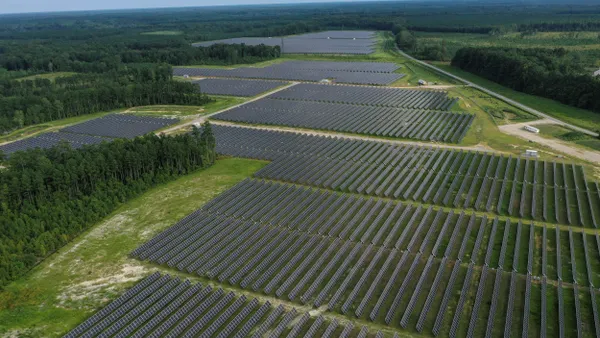Dive Brief:
-
Tesla and Southern California Edison have brought online one of the largest lithium-ion energy storage systems in the world.
-
The 20 MW system in Ontario, Calif., comprises of 396 Tesla power packs and can store up to 80 MWh of energy.
- The project was built in 88 days and is the result of a fast track solicitation by SCE to address the potential reliability issues resulting from the closure of the Aliso Canyon gas storage facility.
Dive Insight:
Several energy storage projects are now entering service as a result of a solicitation issued last May by SCE seeking storage resources to alleviate potential shortfalls stemming from the Aliso Canyon methane leaks. The proliferation of storage resources in response to potential reliability issues demonstrates how quickly the utility sector can act to bring on new technologies when regulators clear the path.
In addition to the Tesla project, Powin Energy earlier this week unveiled its 2 MW, 8 MWh battery energy storage system in Irvine, CA. And the 20 MW AltaGas Pomona Energy Facility —another project to mitigate impacts from the Aliso Canyon leaks— was brought online last week.
“Storage is quite a new thing … and this is a different breed of battery. This is the tip of the iceberg of how much storage we’ll see on the grid,” J.B. Straubel, Tesla’s chief technical officer, said in a statement.
The batteries can charge when there is more renewable energy than demand and used to supply energy to customers during peak hours, enabling greater use of clean energy technologies. SCE is also evaluating the use of battery storage to improve the reliability of SCE’s distribution network, and support the integration of distributed energy resources, such as residential solar systems.













